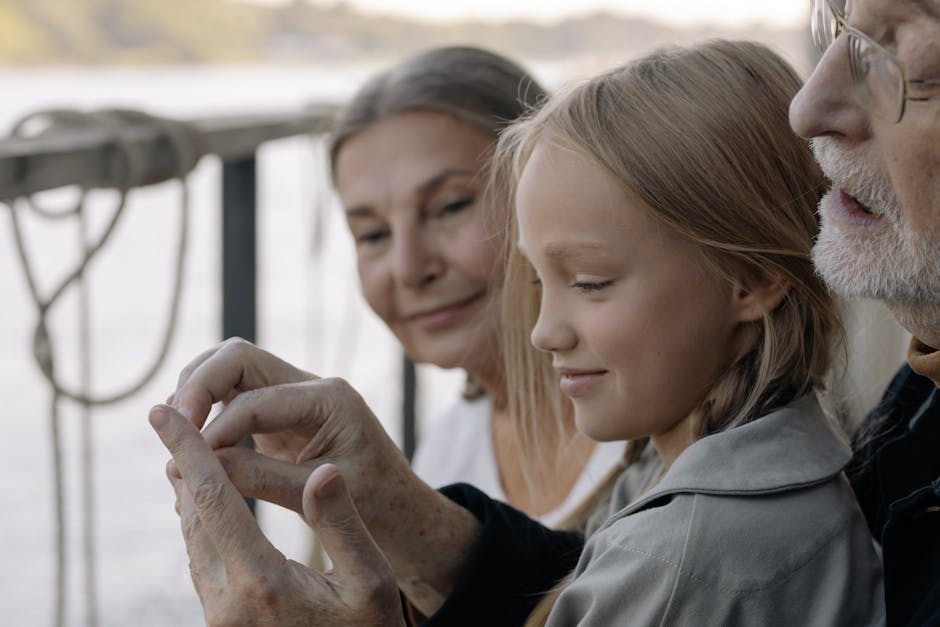Thai Silk: A Legacy of Craftsmanship, Woven with Tradition & Timeless Beauty

Thai Silk: A Legacy of Craftsmanship, Woven with Tradition & Timeless Beauty
Have you ever run your fingers across a piece of Thai silk and felt that indescribable smoothness, that subtle shimmer that seems to capture the light? I have, and it's more than just fabric; it's an experience. It's a connection to a centuries-old tradition, a story woven thread by thread by skilled artisans. Let me tell you, once you appreciate the artistry behind it, you'll never look at silk the same way again.
The Allure of Thai Silk: More Than Just Fabric

Thai silk isn't just a material; it's a symbol. It represents Thailand's rich cultural heritage, its dedication to craftsmanship, and its enduring connection to the natural world. For me, wearing a piece of Thai silk feels like carrying a piece of Thai history with me. It's elegant, sophisticated, and deeply meaningful.
What makes Thai silk so special? Well, several factors contribute to its unique allure:
- Unique Texture: The distinctive texture of Thai silk arises from the raw silk being reeled and spun by hand. Imperfections are part of the charm, adding a unique, textural quality.
- Natural Luster: Thai silk has an unmatched natural sheen that comes from the triangular prism structure of the silk fiber. This allows the fabric to refract light in various angles.
- Strength and Durability: Despite its delicate appearance, Thai silk is surprisingly strong and durable. With proper care, a garment crafted from Thai silk can last for generations.
- Dyeing Techniques: Traditional Thai silk dyeing techniques using natural dyes create vibrant, long-lasting colors. These dyes, derived from plants, insects, and minerals, further enhance the fabric's uniqueness.
But honestly, the real magic lies in the hands of the weavers. It's their skill, patience, and artistry that transforms raw silk into a masterpiece.
The Journey From Silkworm to Stunning Textile

The creation of Thai silk is a fascinating process, a labor of love that begins with the humble silkworm. It's a journey that requires meticulous attention to detail at every stage.
Here's a simplified look at the process:
- Silkworm Rearing: The entire process begins with silkworms, specifically the larvae of the Bombyx mori moth. These little creatures are fed a diet solely of mulberry leaves. The quality of the leaves directly impacts the quality of the silk. Farmers carefully tend to the silkworms, ensuring they have adequate food and a clean environment.
- Cocoon Production: After several weeks of voracious eating, the silkworms begin to spin their cocoons. They secrete a liquid protein called fibroin from their silk glands, and this hardens into a silk fiber upon contact with the air. Each silkworm spins a single, continuous strand of silk that can be up to a mile long!
- Cocoon Harvesting: Once the silkworms have completed their cocoons, they are harvested. The cocoons are carefully collected, and the next step involves extracting the silk fibers.
- Silk Reeling: The cocoons are boiled in hot water to soften the sericin, a gummy protein that holds the silk fibers together. This allows the filaments to be unwound and reeled onto a spool. Several strands of silk are reeled together to create a single, thicker thread. This is a delicate process, requiring skill and precision.
- Silk Throwing: The reeled silk threads are then twisted together to create a stronger yarn. This process is called "throwing," and it gives the silk its characteristic texture and durability.
- Dyeing: Before weaving, the silk yarn is dyed using natural or synthetic dyes. Traditional Thai silk dyeing often utilizes natural dyes derived from plants, insects, and minerals, resulting in a rich and vibrant palette of colors.
- Weaving: Finally, the dyed silk yarn is woven into fabric. Thai silk is traditionally woven on handlooms, a painstaking process that requires immense skill and patience. The patterns are often intricate and symbolic, reflecting the cultural heritage of the region.
It's truly remarkable to think that a single piece of silk has gone through so many stages, each demanding expertise and dedication. You can't help but appreciate the artistry and the time that goes into every single meter of fabric.
The Art of Thai Silk Weaving: A Legacy Passed Down Through Generations

The heart of Thai silk lies in the art of weaving. It's a skill passed down through generations, a legacy preserved by dedicated artisans. Walking into a Thai silk weaving village is like stepping back in time. The rhythmic clatter of the looms, the vibrant colors of the silk yarn, and the focused expressions of the weavers create an atmosphere of creativity and tradition.
There are several distinct weaving techniques used in Thai silk production:
- Plain Weave: This is the simplest weaving technique, producing a smooth, even fabric.
- Twill Weave: Twill weave creates a diagonal rib pattern on the fabric, adding texture and visual interest.
- Brocade Weave (Yok Dok): This is a complex and intricate weaving technique that involves adding supplementary weft threads to create raised patterns on the fabric. Brocade designs often feature elaborate floral motifs, geometric shapes, and mythical creatures.
- Ikat Weave (Mudmee): Ikat is a resist dyeing technique where the warp and/or weft threads are tied and dyed before weaving. This creates blurred, intricate patterns in the finished fabric. Mudmee silk is highly prized for its unique and artistic designs.
Watching a skilled weaver at work is mesmerizing. Their hands move with incredible speed and precision, guiding the shuttle back and forth across the loom. They're not just creating fabric; they're creating art. Each piece is unique, reflecting the weaver's individual style and creativity.
The Cultural Significance of Thai Silk: More Than Just a Commodity

Thai silk is deeply woven into the fabric of Thai culture. It's more than just a commodity; it's a symbol of status, tradition, and national pride.
Historically, Thai silk was reserved for royalty and the upper classes. The intricate designs and luxurious fabric were a symbol of wealth and power. Even today, Thai silk is often worn for special occasions, such as weddings, religious ceremonies, and formal events.
Here are some specific examples of the cultural significance:
- Royal Attire: Thai silk is frequently used to create garments for the royal family, emphasizing its prestige and connection to the monarchy.
- Religious Ceremonies: The use of Thai silk in religious ceremonies underscores the respect and reverence for cultural traditions.
- Formal Occasions: Wearing Thai silk to formal events demonstrates appreciation for Thai culture and a sense of national pride.
Beyond its use in clothing, Thai silk also plays a role in traditional arts and crafts. It's used to create tapestries, wall hangings, and other decorative items. These pieces often depict scenes from Thai mythology, history, and everyday life.
Preserving the Legacy: Challenges and Opportunities

Despite its enduring appeal, the Thai silk industry faces several challenges. The rise of cheaper synthetic fabrics, the increasing cost of raw materials, and the declining number of skilled weavers all threaten the future of this traditional craft.
However, there are also opportunities to preserve and promote Thai silk. Here's what I think we can do:
- Supporting Local Artisans: One of the most important things we can do is to support local Thai silk weavers by purchasing their products. Look for authentic Thai silk from reputable sources and be willing to pay a fair price for the quality and craftsmanship.
- Promoting Sustainable Practices: Encouraging sustainable silkworm farming and natural dyeing practices can help to protect the environment and ensure the long-term viability of the industry.
- Educating Consumers: Raising awareness about the history, artistry, and cultural significance of Thai silk can help to increase demand and appreciation for this unique textile.
- Innovation and Design: By incorporating Thai silk into modern designs and collaborating with contemporary designers, we can make it relevant to a wider audience.
- Government Support: Continued government support for training programs, marketing initiatives, and research and development can help to strengthen the industry and ensure its survival.
I believe that by working together, we can ensure that the legacy of Thai silk continues to thrive for generations to come.
My Personal Connection to Thai Silk: A Timeless Treasure

My own journey with Thai silk began several years ago during a trip to Thailand. I was immediately captivated by the beauty and artistry of the fabric. I remember visiting a small weaving village in the northeast of Thailand and being mesmerized by the skill and dedication of the weavers. I purchased a beautiful handwoven scarf that day. It's still one of my most treasured possessions.
Whenever I wear that scarf, I feel a connection to Thailand and its rich cultural heritage. It's a reminder of the skilled artisans who created it and the centuries-old tradition that it represents. It's a piece of art that I can wear and cherish.
For me, Thai silk is more than just fabric. It's a symbol of beauty, tradition, and craftsmanship. It's a reminder of the importance of supporting local artisans and preserving cultural heritage. It's a timeless treasure that I will cherish forever.
Caring for Your Thai Silk: Ensuring Longevity

If you are fortunate enough to own a piece of Thai silk, it is important to care for it properly to ensure its longevity and beauty. Here are some tips to keep in mind:
- Dry Cleaning: The best way to clean Thai silk is to have it professionally dry cleaned. This will help to protect the delicate fibers and prevent damage.
- Hand Washing: If you choose to hand wash Thai silk, use cool water and a mild detergent. Gently swirl the fabric in the water and avoid rubbing or twisting it. Rinse thoroughly with cool water.
- Drying: Never put Thai silk in the dryer. Instead, gently squeeze out the excess water and roll the fabric in a towel. Then, lay it flat to dry in a cool, shaded area. Avoid direct sunlight, which can fade the colors.
- Ironing: Iron Thai silk on a low setting while it is still slightly damp. Use a pressing cloth to protect the fabric from direct heat.
- Storage: Store Thai silk in a cool, dry place away from direct sunlight. Avoid hanging it for long periods, as this can stretch the fibers.
With proper care, your Thai silk garment will last for generations, becoming a cherished heirloom.
In Conclusion: Embrace the Legacy

Thai silk is more than just a fabric; it's a story, a tradition, and a legacy. It represents the skill, artistry, and dedication of generations of Thai weavers. By appreciating and supporting Thai silk, we can help to preserve this unique cultural heritage for years to come. So, the next time you see a piece of Thai silk, take a moment to appreciate the beauty and artistry behind it. It's a connection to something truly special, something that transcends trends and embodies timeless elegance.
Post a Comment